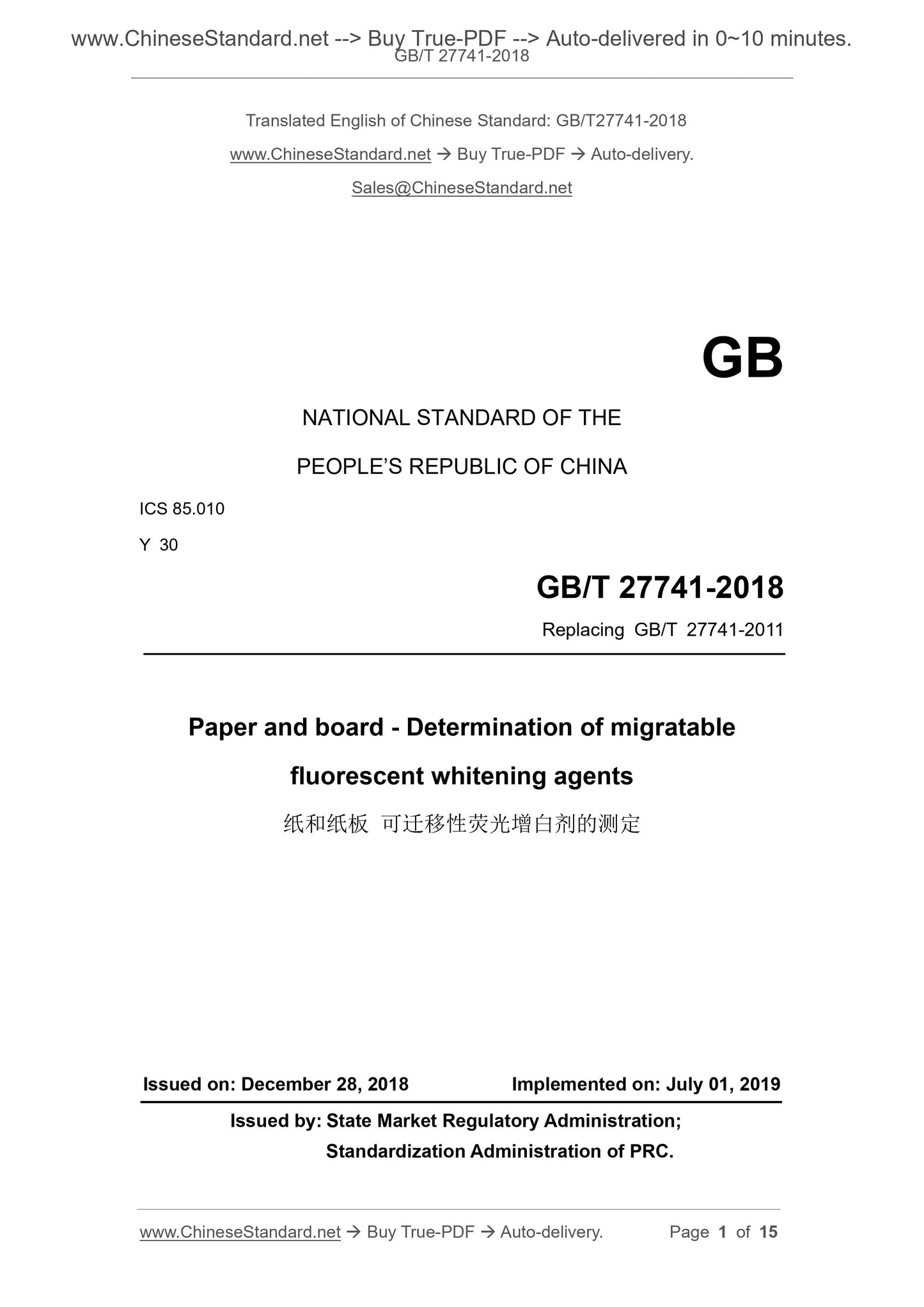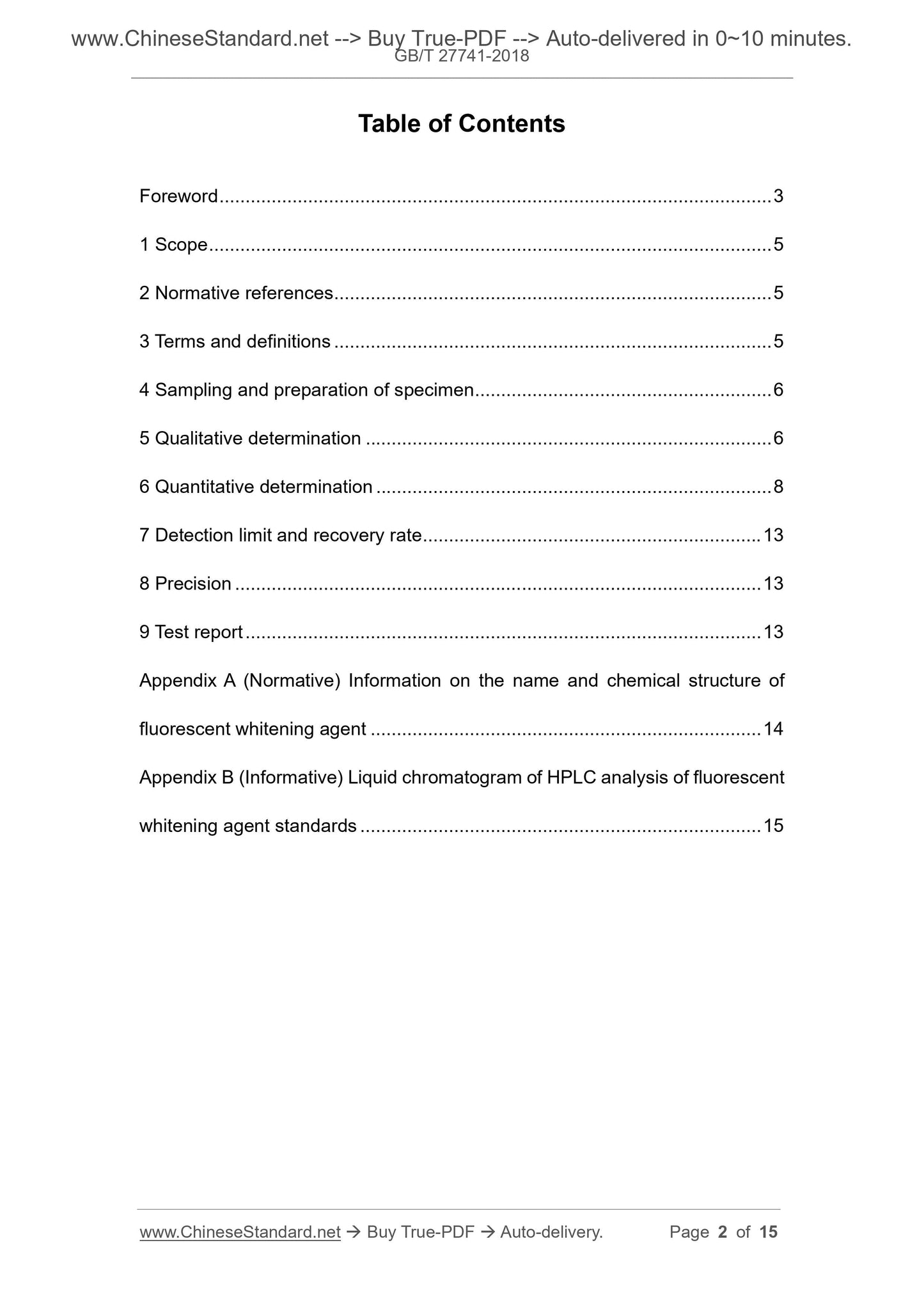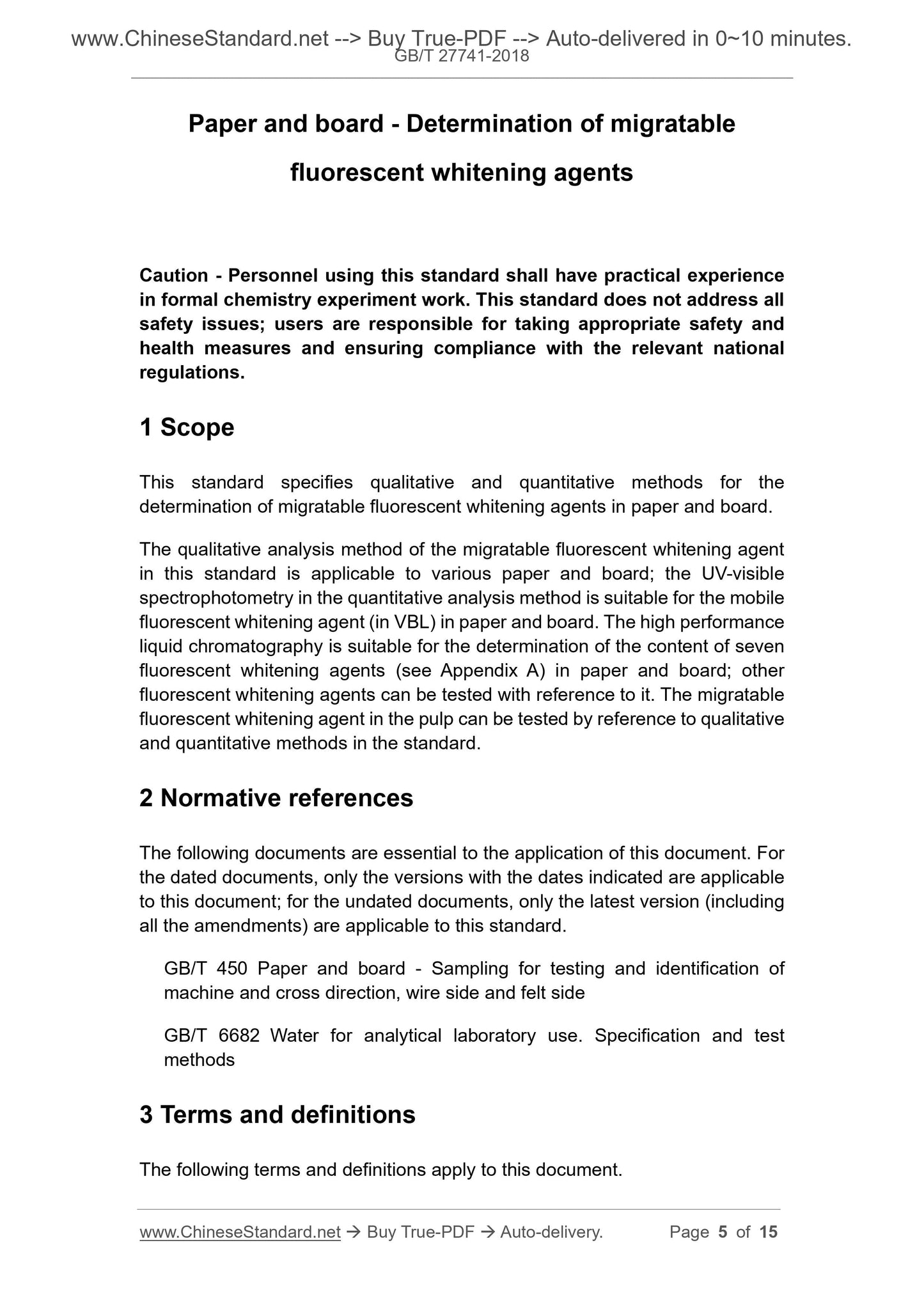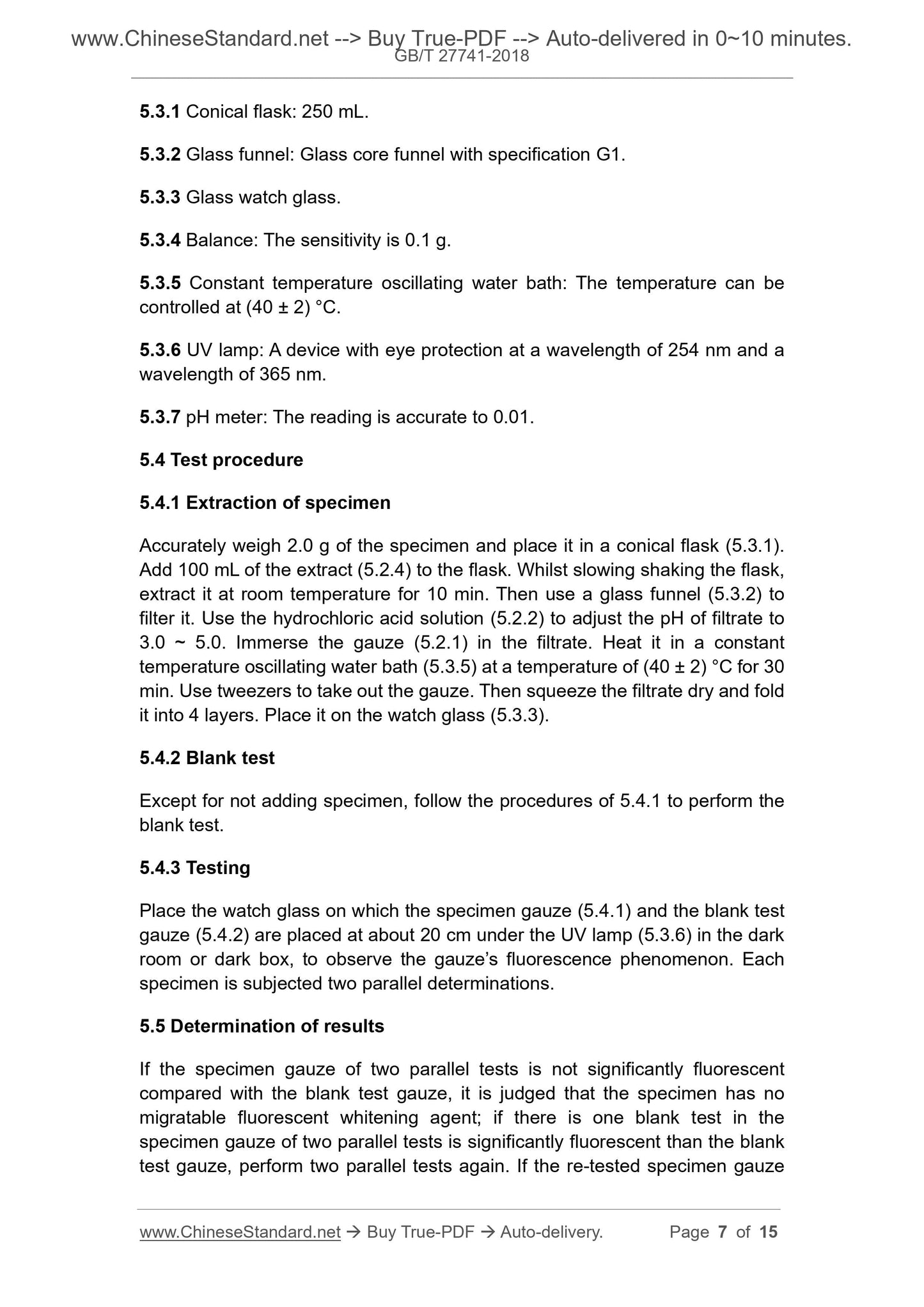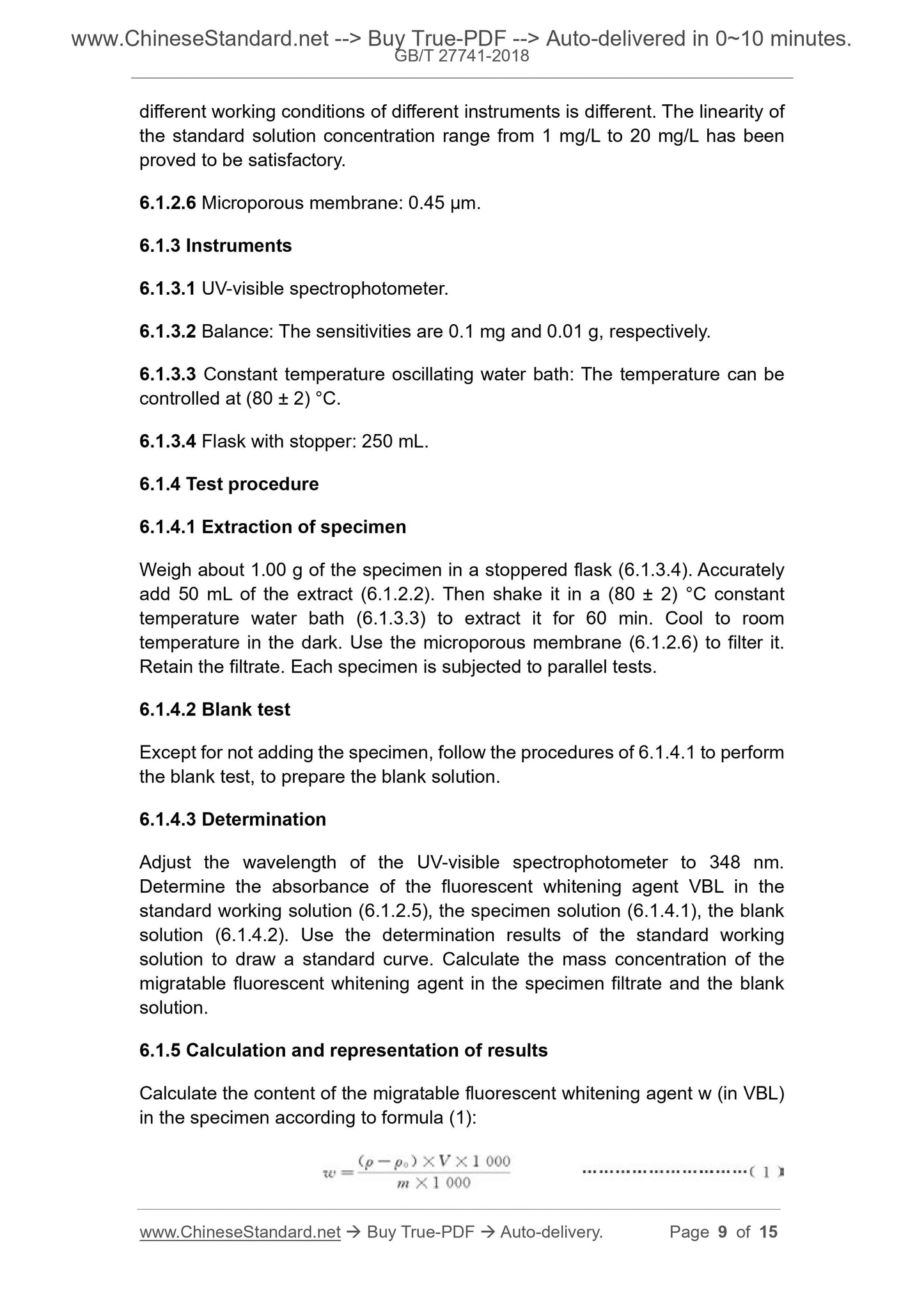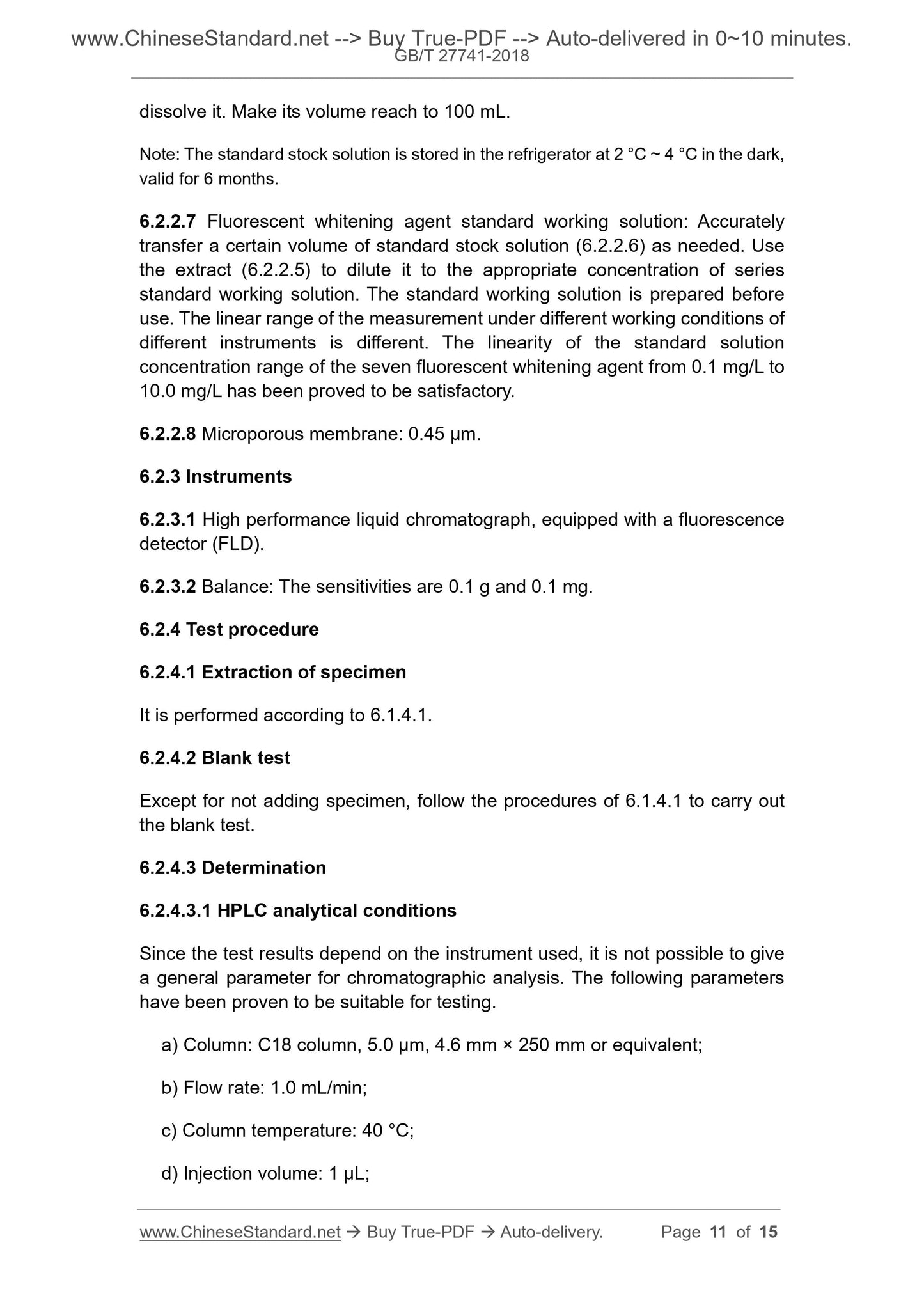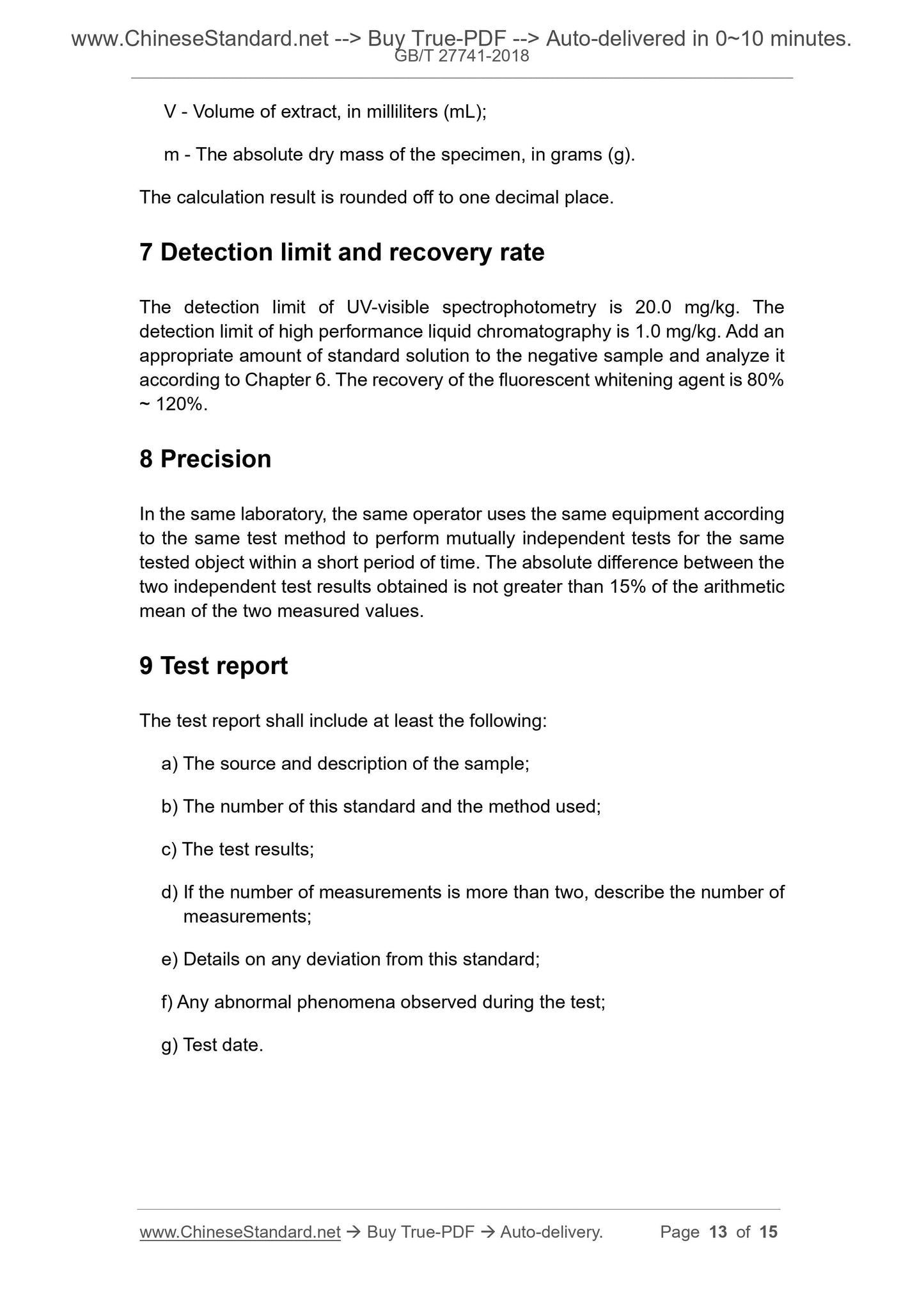1
/
of
7
www.ChineseStandard.us -- Field Test Asia Pte. Ltd.
GB/T 27741-2018 English PDF (GB/T27741-2018)
GB/T 27741-2018 English PDF (GB/T27741-2018)
Regular price
$130.00
Regular price
Sale price
$130.00
Unit price
/
per
Shipping calculated at checkout.
Couldn't load pickup availability
GB/T 27741-2018: Paper and board - Determination of migratable fluorescent whitening agents
Delivery: 9 seconds. Download (and Email) true-PDF + Invoice.Get Quotation: Click GB/T 27741-2018 (Self-service in 1-minute)
Newer / historical versions: GB/T 27741-2018
Preview True-PDF
Scope
This standard specifies qualitative and quantitative methods for thedetermination of migratable fluorescent whitening agents in paper and board.
The qualitative analysis method of the migratable fluorescent whitening agent
in this standard is applicable to various paper and board; the UV-visible
spectrophotometry in the quantitative analysis method is suitable for the mobile
fluorescent whitening agent (in VBL) in paper and board. The high performance
liquid chromatography is suitable for the determination of the content of seven
fluorescent whitening agents (see Appendix A) in paper and board; other
fluorescent whitening agents can be tested with reference to it. The migratable
fluorescent whitening agent in the pulp can be tested by reference to qualitative
and quantitative methods in the standard.
Basic Data
| Standard ID | GB/T 27741-2018 (GB/T27741-2018) |
| Description (Translated English) | Paper and board - Determination of migratable fluorescent whitening agents |
| Sector / Industry | National Standard (Recommended) |
| Classification of Chinese Standard | Y30 |
| Classification of International Standard | 85.010 |
| Word Count Estimation | 10,132 |
| Date of Issue | 2018-12-28 |
| Date of Implementation | 2019-07-01 |
| Older Standard (superseded by this standard) | GB/T 27741-2011 |
| Issuing agency(ies) | State Administration for Market Regulation, China National Standardization Administration |
Share
